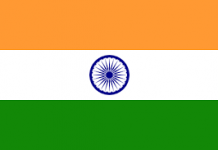The emergency ward at the main government hospital in Sehwan, a small town in southern Pakistan, is overwhelmed. On a recent visit, Reuters witnessed hundreds of people crammed into rooms and corridors, desperately seeking treatment for malaria and other illnesses that are spreading fast after the country’s worst floods in decades. Amid the crush, Naveed Ahmed, a young doctor in the emergency response department of the Abdullah Shah Institute of Health Sciences, is surrounded by five or six people trying to get his attention. The 30-year-old keeps his cool as stretched emergency services struggle to cope with thousands of patients arriving from miles around after their homes were submerged under water when heavy rains fell in August and September. “We become so overworked at times that I feel like collapsing and going on an intravenous drip,” a smiling Ahmed told Reuters as he sipped a cup of tea in the hospital’s canteen during a short break. “But it’s because of the prayers of these patients that we keep going.” Ahmed is on the frontline of the battle to limit sickness and death across southern Pakistan, where hundreds of towns and villages were cut off by rising waters. The deluge has affected around 33 million people in a country of 220 million. Most of the estimated 300-400 patients arriving at his clinic each morning, many of them children, are suffering from malaria and diarrhoea, although with winter approaching, Ahmed fears other illnesses will become more common. “I hope people displaced by the floods can get back to their homes before winter; (if not) they will be exposed to respiratory illnesses and pneumonia living in tents,” he said. Hundreds of thousands of Pakistanis who fled their homes are living in government camps set up to accommodate them, or simply out in the open. Stagnant floodwaters, spread over hundreds of square kilometres (miles), may take two to six months to recede in some places, and have already led to widespread cases of skin and eye infections, diarrhoea, malaria, typhoid and dengue fever. According to the health department of Sindh province, the worst-affected region, 17,285 cases of malaria have been confirmed since July 1. Anticipating the risk of disease outbreaks after the rescue and relief phase of the floods, the Sindh government is trying to hire more than 5,000 health professionals on a temporary basis in districts most at risk. “We are short of human resources considering the magnitude of the burden of disease following the unprecedented rains and floods,” Qasim Soomro, provincial lawmaker and parliamentary health secretary of the Sindh government, told Reuters. In the hospital ward in Sehwan, a young man with a high fever was having fits on a bed outside the main emergency room. His mother ran to Ahmed, who attended the patient and asked a male nurse to place cold pads on his forehead.
متعلقہ مضامین
-
Here’s how you can watch Pakistan Vs England T20 match Live
-
Aima Baig accused of cheating ex-fiancé Shahbaz Shigri
-
FIA summons Tarin over IMF audio leak
-
PM appoints two more SAPMs as cabinet swells to 72
-
Water-borne diseases claim 324 lives in flood-ravaged areas
-
Govt to subsidise Panadol, Paracetamol: PM Shehbaz
-
Pak Army continues relief operation in Balochistan
-
Man arrested in Karachi for harassing Turkish vlogger
-
Mushaal lauds OIC’s support for Kashmir cause
-
NAB starts inquiry into ‘irregularities’ in BRT project
-
PTDC national tourism conference starts today
-
Unprecedented jump in ranking draws QAU Rs1b grant from donors













